Healthcare facilities generate massive amounts of data daily. However, raw numbers alone don't drive better…
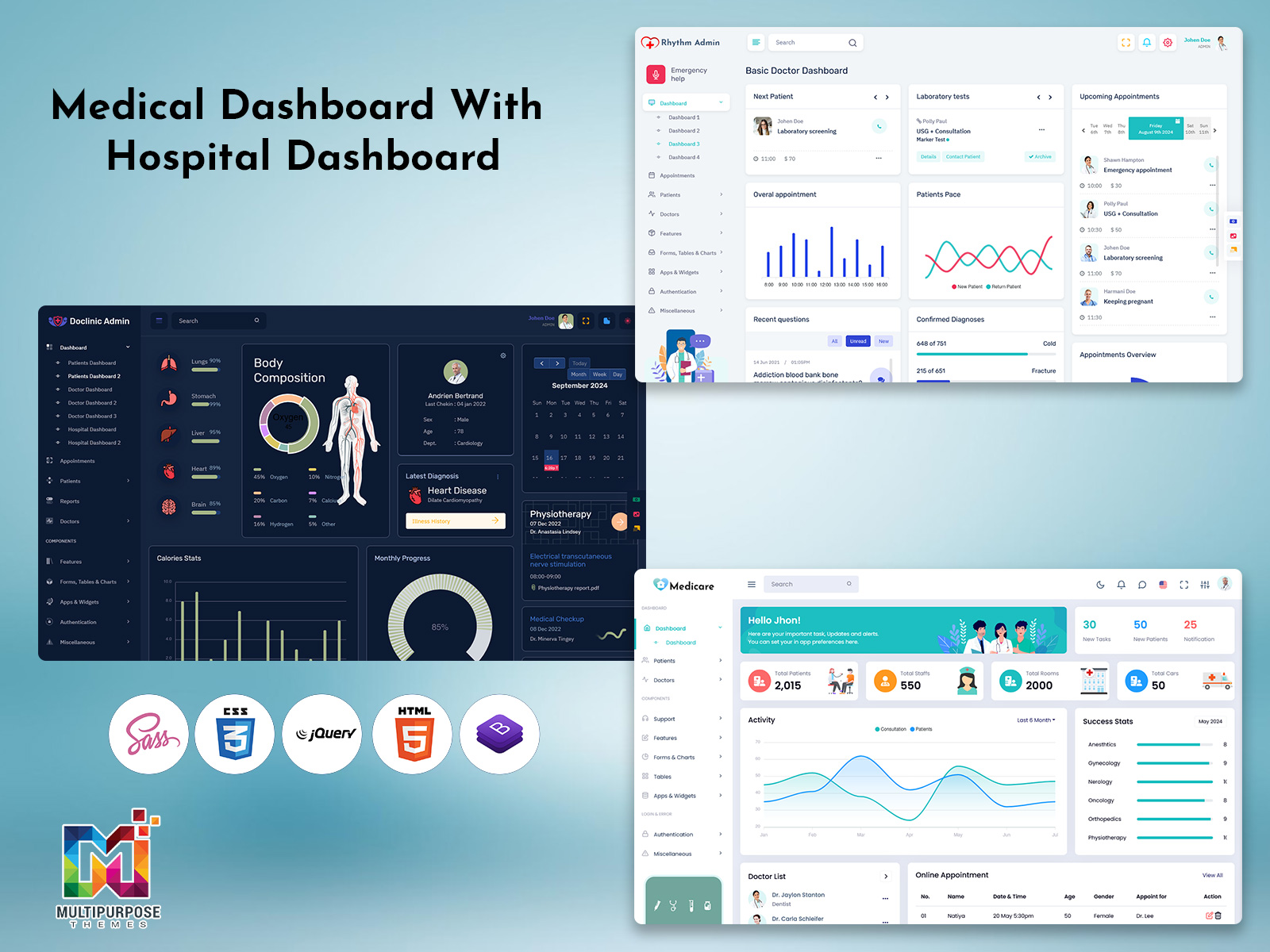
How Digital Hospital Dashboard are Revolutionizing Medical Decision-Making
Reading Time: 7 minutes
The digital hospital dashboard is one of the newest advancements that we can see in the healthcare industry. These powerful tools are reshaping how healthcare providers monitor, analyze, and respond to critical patient information in real-time. Far from being just another piece of technology, these Hospital Admin Dashboards represent a fundamental shift toward data-driven healthcare that puts patient outcomes at the center of every decision.
Explore Medical UI Dashboards from Different Admin Templates
Medicare Admin – A Power Healthcare Dashboard
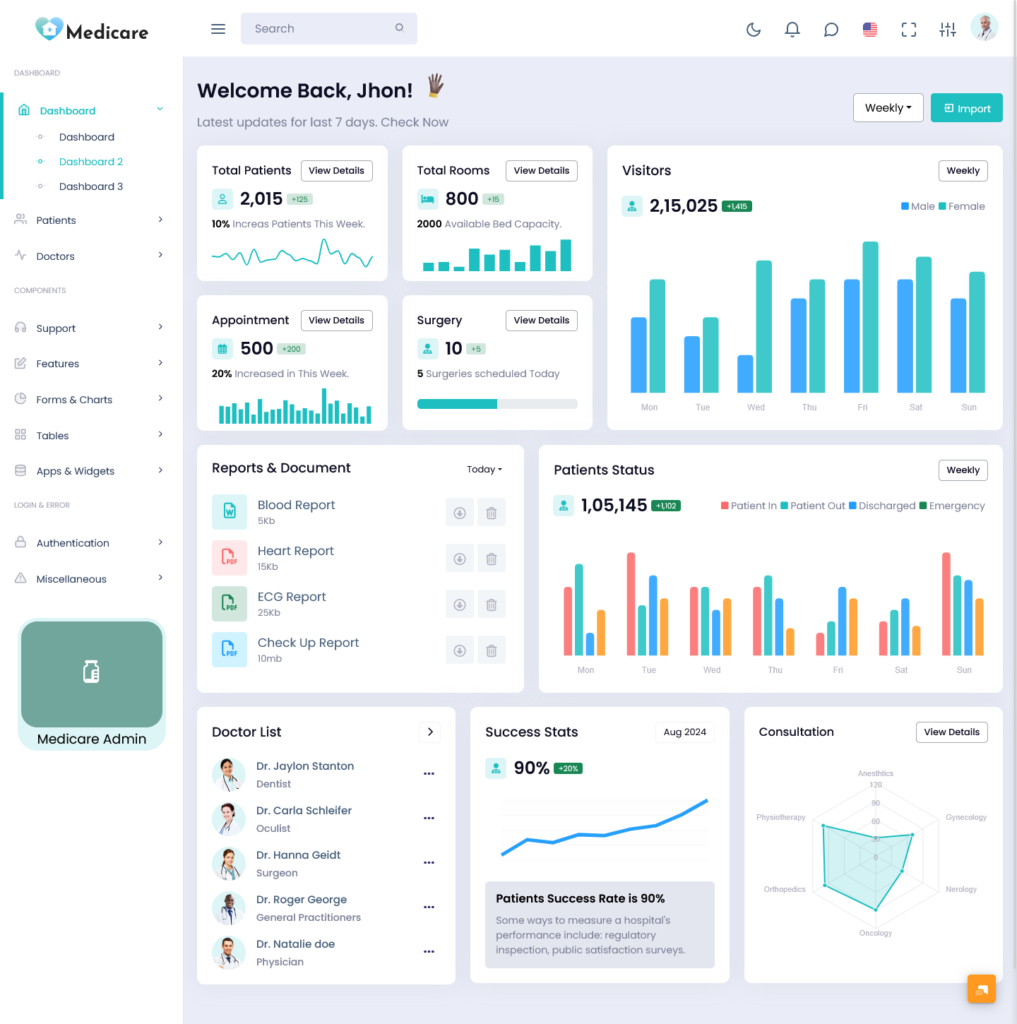
BUY NOW DEMO
Doclinic Admin – A Dynamic Hospital Dashboard

BUY NOW DEMO
Rhythm Admin – A Data-Centric Medical Dashboard

BUY NOW DEMO
What Makes Hospital Dashboards Essential?
A hospital dashboard serves as the nerve center of modern medical facilities. Think of it as a digital command center that displays vital information at a glance. These systems collect data from multiple sources throughout the hospital and present it in an easy-to-understand visual format. Doctors, nurses, and administrators can quickly see everything from patient vital signs to bed availability, medication schedules to surgical room status.
The beauty of a well-designed hospital dashboard lies in its simplicity. Complex medical data becomes accessible through charts, graphs, and color-coded alerts. When a patient’s condition changes, the Hospital Dashboard Template immediately reflects this information. This instant visibility helps medical teams respond faster and make better decisions.
See More Admin Interfaces – Designed for Healthcare
Gilded Admin – Medical UI Dashboard
BUY NOW DEMO
Tresto Admin – Medical UI Dashboard

BUY NOW DEMO
BsinX Admin – Medical UI Dashboard
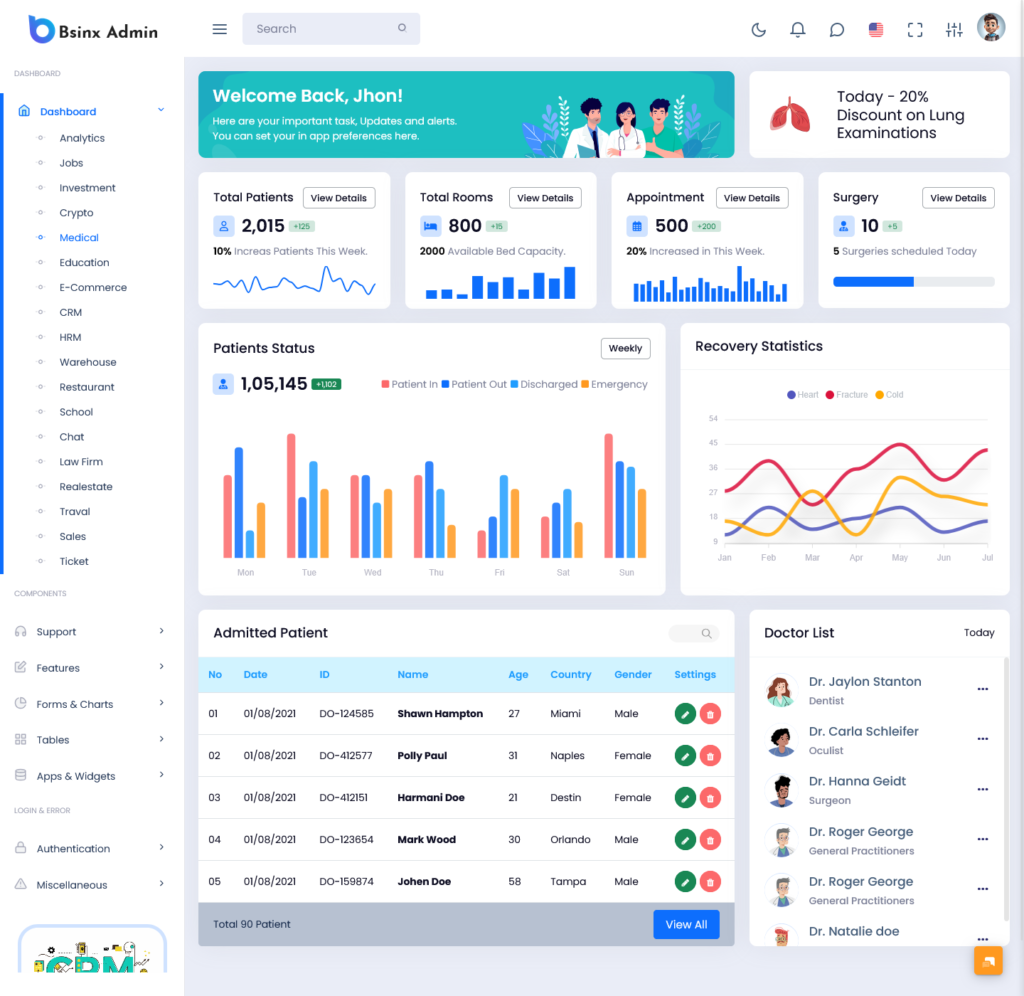
BUY NOW DEMO
The Power of Patient Dashboards
Within the broader hospital dashboard system, patient dashboards deserve special attention. A patient dashboard focuses specifically on individual patient care. It brings together all relevant information about a specific patient into one clear view. This includes medical history, current medications, test results, vital signs, and treatment plans.
Imagine a nurse starting her shift. Instead of searching through multiple systems and paper charts, she can view her assigned patients on a single screen. Each patient dashboard shows current status, upcoming medications, scheduled procedures, and any alerts that need attention. This streamlined approach saves time and reduces the chance of missing important information.
Patient dashboards also help with family communication. Some hospitals now share simplified versions with patients and their families. This transparency builds trust and helps everyone stay informed about treatment progress.
Building Better Care with Dashboard Templates
Creating effective hospital dashboards from scratch can be overwhelming. This is where hospital dashboard templates come into play. These pre-designed frameworks provide a solid starting point for healthcare facilities looking to implement dashboard systems.
A good hospital dashboard template includes standard features that most medical facilities need. These might include patient census displays, emergency department wait times, operating room schedules, and staff assignments. The template provides the basic structure, which hospitals can then customize to match their specific needs.
Using templates offers several advantages. First, they save development time and costs. Second, they incorporate best practices from successful implementations at other facilities. Third, they ensure that important features aren’t overlooked during the design process.
Many template providers offer specialized versions for different hospital departments. Emergency departments might need templates focused on patient triage and bed turnover. Intensive care units require templates that emphasize vital sign monitoring and medication tracking. Surgical departments benefit from templates that coordinate operating room schedules with staff availability.
New Dental Dashboard for Dentists – Powered by Oral Admin
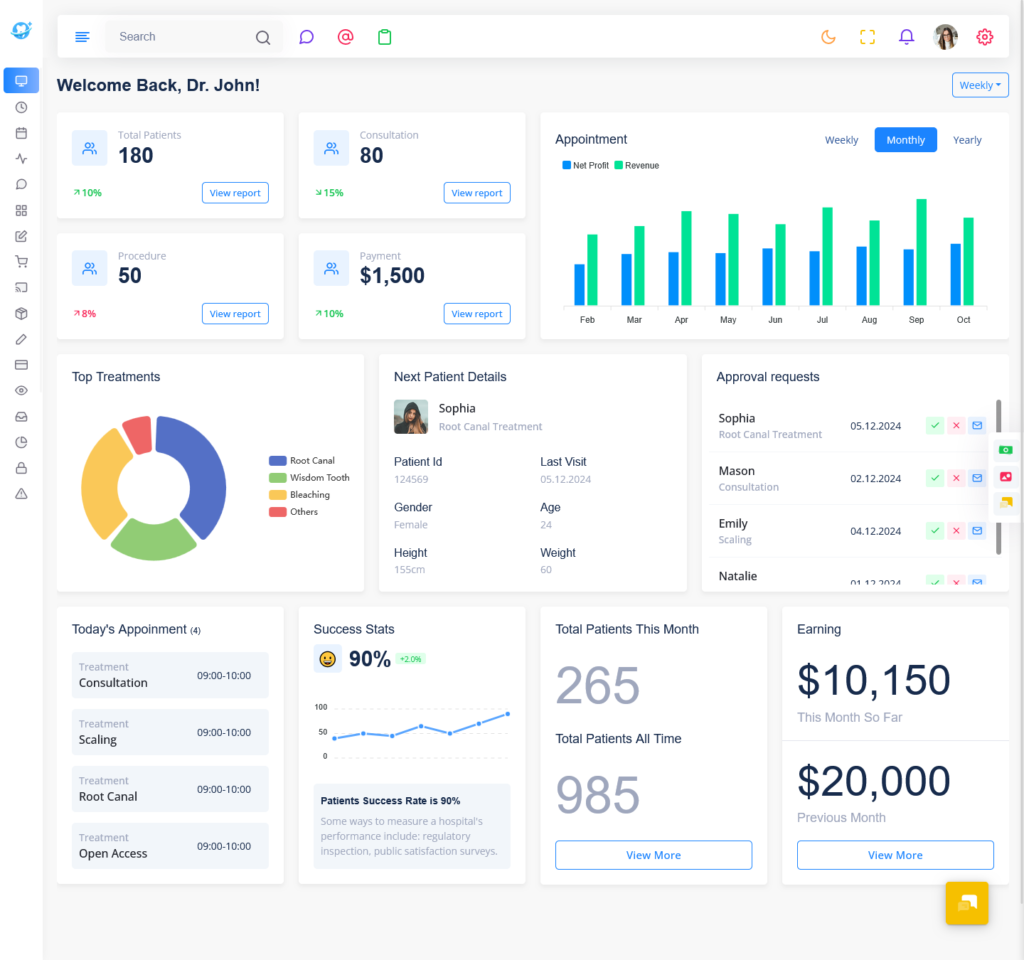
BUY NOW DEMO
Real-World Impact on Patient Care
The true value of hospital dashboards becomes clear when we look at their impact on patient outcomes. Studies show that hospitals using comprehensive dashboard systems experience reduced medical errors, shorter patient wait times, and improved staff efficiency.
Consider the emergency department scenario. Traditional systems might leave nurses checking multiple computers to track patient flow. With a hospital dashboard, the entire team can see which patients are waiting, who needs attention first, and which beds are becoming available. This visibility helps reduce overcrowding and ensures patients receive timely care.
In surgical settings, dashboard templates help coordinate complex schedules. Operating room staff can see which procedures are running behind schedule, when equipment needs sterilization, and which patients are ready for surgery. This coordination reduces delays and improves the overall surgical experience.
Patient dashboards particularly shine in chronic disease management. Diabetic patients, for example, generate lots of data through blood sugar monitoring, medication tracking, and lifestyle factors. A patient dashboard can display trends over time, helping doctors adjust treatment plans more effectively.
Overcoming Implementation Challenges
While hospital dashboards offer clear benefits, implementing them successfully requires careful planning. Many hospitals struggle with data integration from different systems. Electronic health records, laboratory systems, pharmacy databases, and monitoring equipment all need to communicate effectively.
Staff training represents another significant challenge. Medical professionals are busy people who need systems that work intuitively. A hospital dashboard template that looks impressive but confuses users will ultimately fail. Successful implementations focus on user-friendly designs that require minimal training.
Data security and patient privacy concerns also demand attention. Hospital dashboards handle sensitive medical information that must be protected according to strict regulations. This requires robust security measures and careful access controls.
The Future of Dashboard Technology
Looking ahead, hospital dashboards are becoming even more sophisticated. Artificial intelligence is beginning to play a larger role in analyzing dashboard data and providing predictive insights. Instead of just showing current patient status, future patient dashboards might predict which patients are at risk for complications.
Mobile technology is also expanding dashboard capabilities. Doctors and nurses can now access patient information on tablets and smartphones, bringing critical data directly to the bedside. This mobility enhances the traditional fixed-screen approach and provides more flexibility in patient care.
Voice-activated controls represent another emerging trend. Medical staff could potentially update patient information or request specific data using voice commands, keeping their hands free for patient care activities.
FAQs
Q1. What is a hospital dashboard and why does my hospital need one?
A hospital dashboard is a centralized, real-time digital tool that displays critical information such as patient status, staff schedules, and resource availability. It helps healthcare providers make faster and smarter decisions, improves operational efficiency, and enhances patient care.
Q2. How does a hospital dashboard template save time and money?
Using a Hospital Dashboard Template reduces development costs and setup time by offering pre-designed features. You can easily customize these templates to suit your specific departmental needs without building a system from scratch.
Q3. Can different departments in my hospital use different dashboards?
Absolutely. Many templates are designed for specific departments like Emergency, ICU, Surgery, or Administration. This allows each team to focus on the data that matters most to their function.
Q4. Is the hospital dashboard accessible on mobile devices?
Yes. Modern Bootstrap Admin Templates are responsive and mobile-friendly, allowing doctors and nurses to access patient data directly from tablets or smartphones at the bedside.
Q5. How secure is a digital hospital dashboard?
Hospital dashboards handle sensitive patient information and must comply with data privacy regulations (like HIPAA). Robust access control, encryption, and secure login features are standard in a professionally built Admin Template.
Q6. What’s the difference between a hospital dashboard and a patient dashboard?
A hospital dashboard gives a broad view of hospital operations, while a patient dashboard focuses on the detailed, real-time medical status of individual patients—like vitals, treatment plans, and medication history.
Q7. Can our staff easily learn how to use the new dashboard?
Yes. A good Dashboard Template is designed with user-friendliness in mind. Intuitive interfaces mean minimal training is required, so your team can focus on delivering care—not figuring out new systems.
Q8. How do we know which hospital dashboard template is right for us?
Start by identifying the goals of your hospital: Are you looking to improve patient flow, monitor ICU performance, or manage surgeries more effectively? A quality Dashboard Admin Template can then be customized to match those goals.
Q9. Will the dashboard work with our existing hospital software systems?
Most modern templates built with Bootstrap Admin HTML can integrate with Electronic Health Records (EHR), pharmacy systems, and other data sources via APIs. Integration support depends on the vendor or developer.
Q10. Can we customize the look and feel of the dashboard to match our hospital branding?
Yes. HTML Template Dashboards and Bootstrap Admin Templates are highly customizable, allowing you to apply your colors, fonts, and logos to maintain brand consistency across your digital platforms.
Making the Right Choice
For hospitals considering dashboard implementation, the key is starting with clear goals. What specific problems need solving? Which departments would benefit most? How will success be measured? These questions help guide the selection of appropriate hospital dashboard templates and ensure that the final system meets actual needs.
The investment in quality hospital dashboards and patient dashboards pays dividends in improved care quality, staff satisfaction, and operational efficiency. As healthcare continues to generate more data, these tools become increasingly essential for managing complexity while maintaining focus on patient wellbeing.
Hospital dashboards represent more than just technological advancement – they embody a commitment to using data intelligently in service of better patient care. For healthcare facilities ready to embrace this digital transformation, the potential rewards are substantial and lasting.
 skip to Main Content
skip to Main Content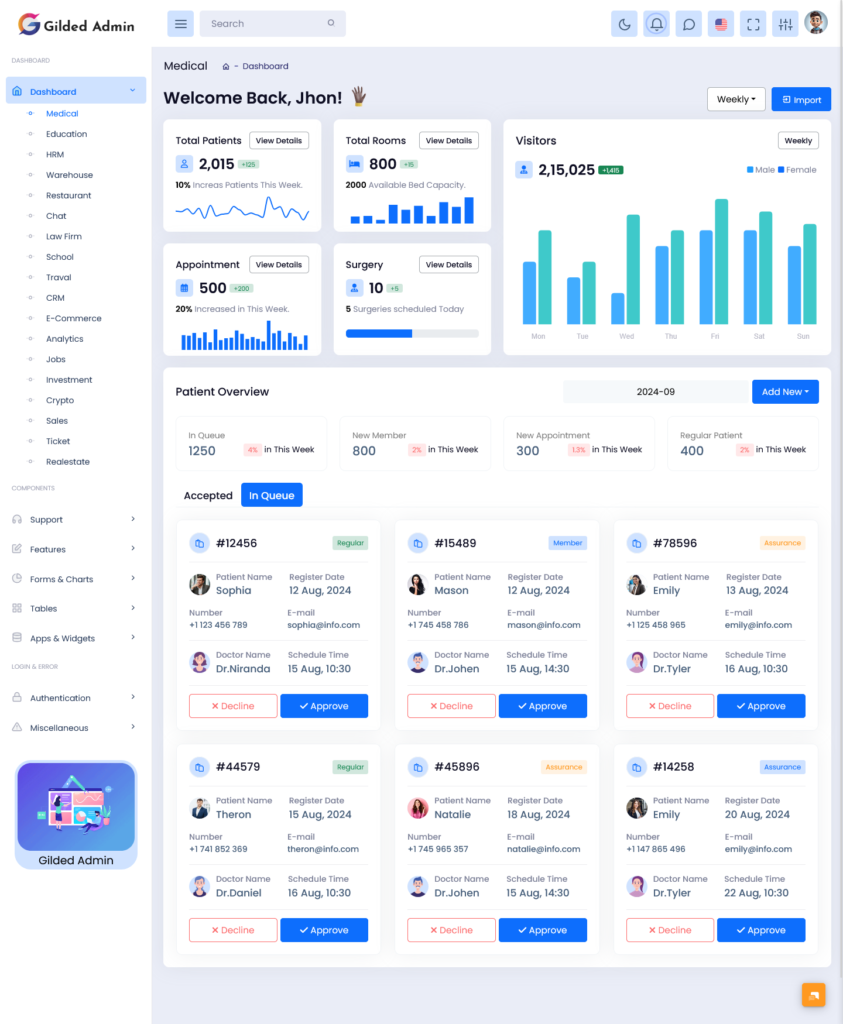

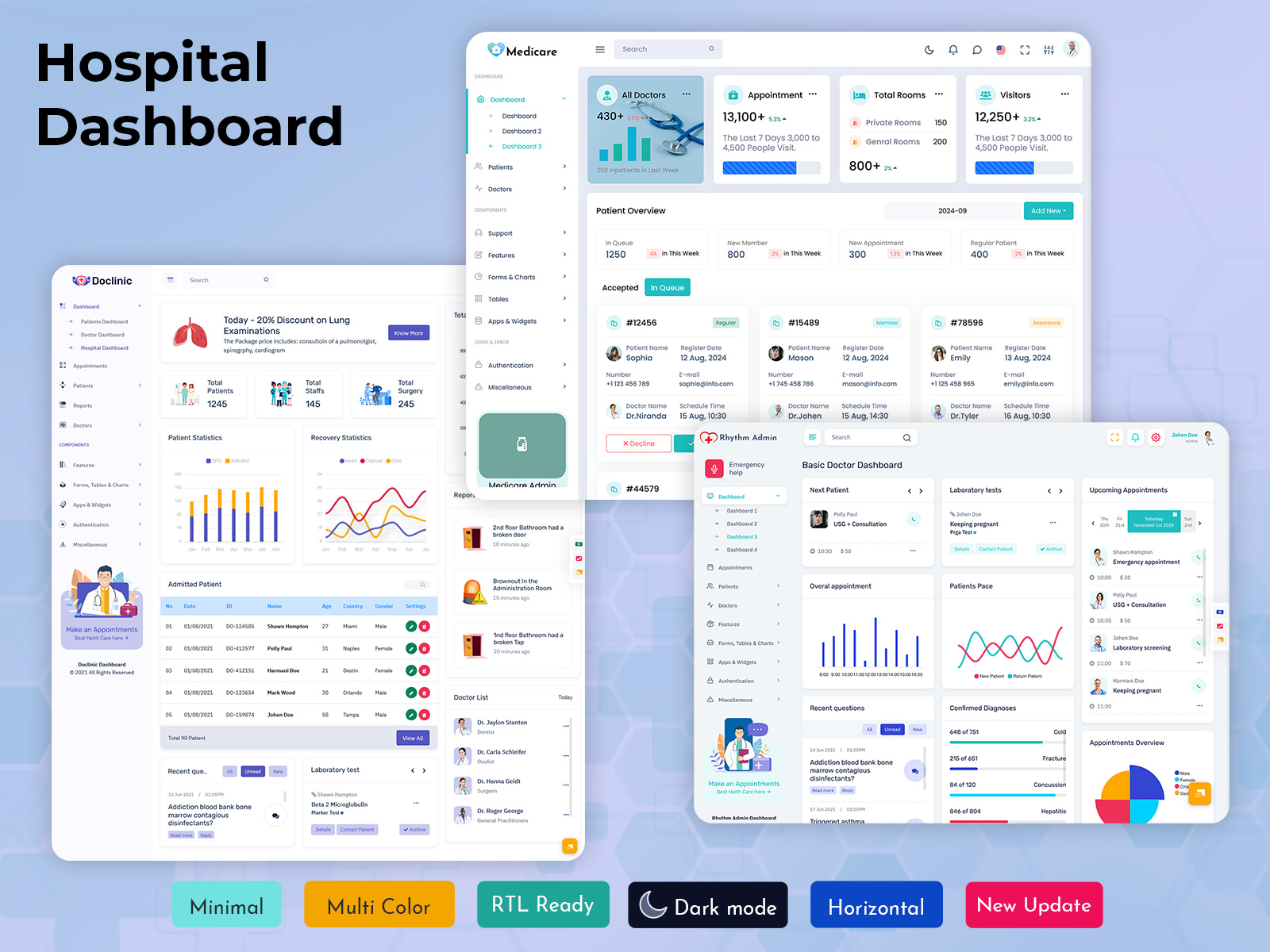
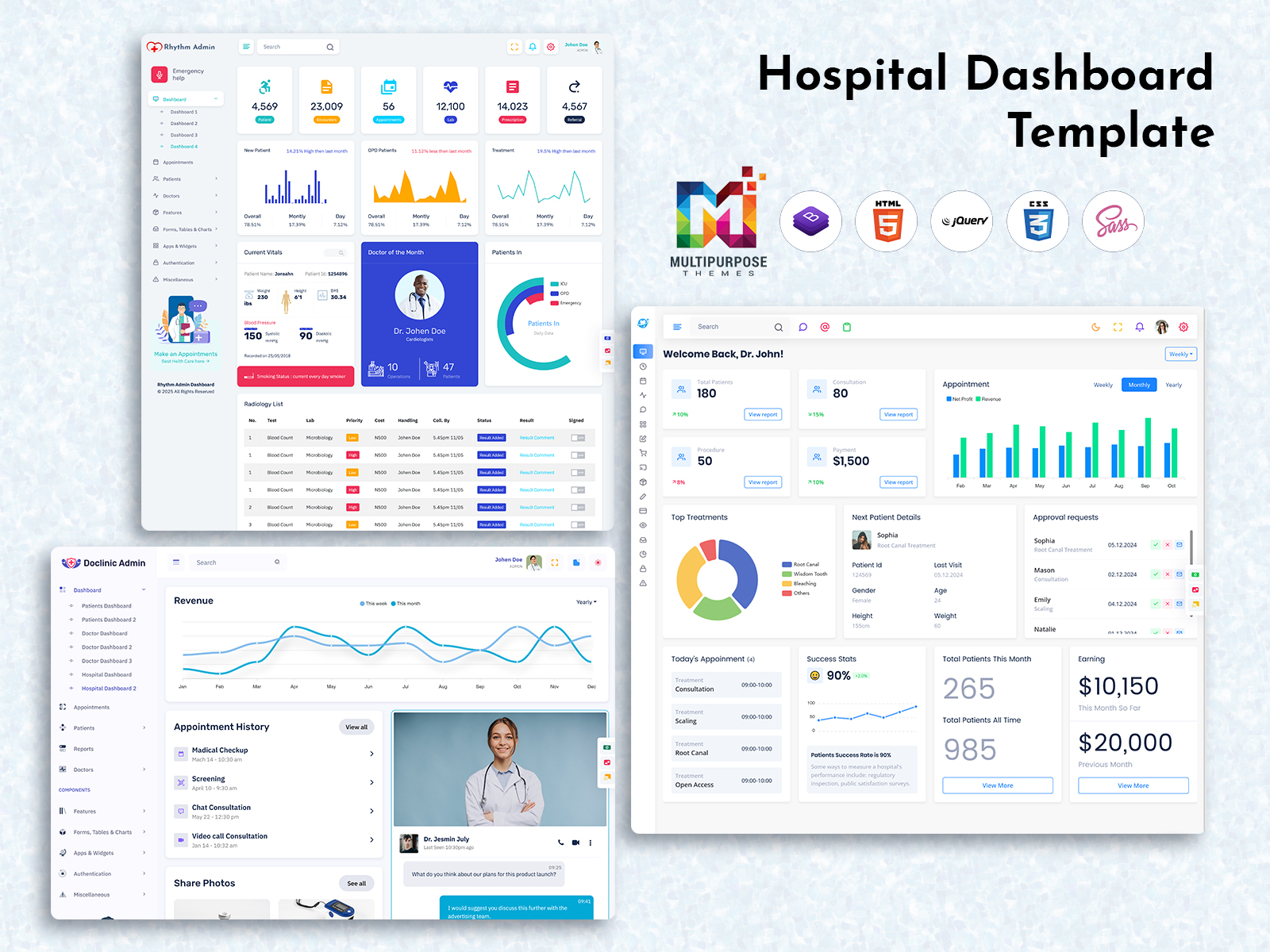
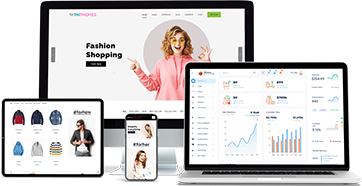

This Post Has 0 Comments